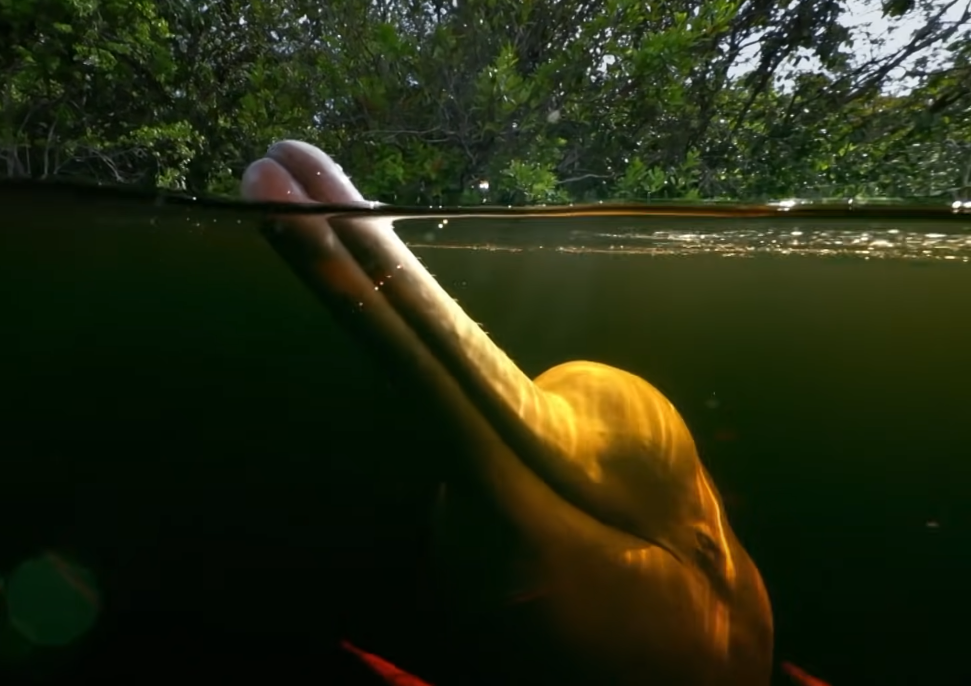The pink river dolphin is one of the most important animals living in the Amazon. It serves as an indicator of the quality of the entire aquatic ecosystem. When there are plenty of dolphins in the rivers, there are plenty of fish and everything is fine. River dolphins are at the top of the local food chain, and when dolphins thrive, the entire Amazon thrives. The pink river dolphin is entwined with many indigenous myths. According to some, it can also turn into a human. According to IPBES, up to one million species are currently threatened with extinction and river dolphins are among them. This species is greatly affected by the fires that are taking place in the Amazon.
Modern technology and fishermen also help with protection
Dolphins are very poorly watched because they have a very large territory. In order to monitor their numbers, dolphins receive sensors. In the past, fishermen were a great threat to dolphins because they were constantly hunting. Now the fishermen themselves are helping to protect them. There is a great enlightenment here and people are explained that dolphins are important for their survival. Dolphins tracking using satellite navigation. One of the important organizations protecting river dolphins is the Omacha Foundation.
“So, the dolphins are telling us, about which areas are important to them and how much they move from one moment of the year to another. We have been able to register that the Ramsar Sites, which have been designated within the last two years, are extremely important for the dolphin; they stay there. Also, the national parks are important to the dolphins. But only 16% of the whole habitat of the dolphins in the Amazon is situated within a protected area. That means that those animals are really vulnerable, ”explains Fernando Trujillo, Scientific Director of the Omacha Foundation.
In order for protection to have the necessary effect, the countries of South America must work together. There are over 35,000 kilometers of rivers and extensive research is expensive and there are not always economic resources to support research and protection.
An important step in protecting river dolphins was taken in 2018 when the Colombian area around Tarapoto Lakes was declared a Ramsar Site. Ramsar Sites are wetlands of international importance protected by the Ramsar Convention. The Amazon rainforest in both Colombia and Bolivia is suffering from constant deforestation, river dam construction, forest fires and human development. Trace data will help determine where dolphins move and what they consume.
How fires affect the number of dolphins
“The flooded forest is really important for its production of fruits and seeds. One acre of flooded forest produces 20 tons of seeds. When the flooded forest is burned down, there are no trees, no seeds, no fish and no dolphins. And it also affects the food security of the people. “When the trees are burned down, and also leaves the riverbeds naked, it creates erosion and in the end that means less depth of the rivers, which affects the aquatic ecosystems,” explains Fernando Trujillo
Other threats include hydroelectric power plants, in which many fish die. Dolphins are also threatened by the mercury that is produced here during gold mining. The population of river dolphins is declining dramatically. Only 340 pink river dolphins live in the Colombian part of the Amazon and their number is decreasing. The protection of a certain area is always complicated by a lack of information. The more information we know about a particular species, the better we can protect it. There is a need for more intensive protection of this iconic dolphin, otherwise it may be an extinct species in the near future.
Sources:
https://ddrn.dk/when-the-amazonas-is-on-fire-one-of-the-many-species-affected-is-the-pink-river-dolphin/
https://www.euronews.com/green/2021/10/12/rare-pink-dolphins-saved-by-high-tech-fishermen-in-the-amazon
https://omacha.org/
Photo credit: Youtube screenshots – BewIxarkyVw, Yty9Zf8ie2g



















